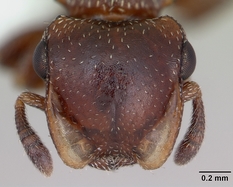
Paraguay may be the world's most important country. Never mind that it is economically isolated and geopolitically forgettable. Rather, I measure importance by less trivial metrics, and by that of course I mean ants.
Paraguayan ants have changed the world. Many of the world's worst pest species evolved on the broad plains of the Paraná river before hitchhiking with human commerce to points abroad. The infamous fire ants in the southern U.S. originated on the Paraná, as did the Argentine Ants that plague California and Europe, along with a rogue's gallery of other trampy and invasive species. These invasives transform ecosystems and drive native species to extinction. Not to mention that some of them are champion stingers and are very good at getting into houses, greenhouses, and wherever else they can stir up trouble.
We do not know why ants from this region are so potent, but perhaps something about the Paraná acts as a cradle for pestilence. Sadly, we're a pretty long way from finding out, as the ant fauna in that part of the world has been among the most poorly-documented anywhere. We know a fair bit about what happens to these ants after they arrive in Europe, Hawaii, Florida, and other places frequented by scientists, but what goes on in the native range is largely a black box. I've been slowly been chipping away at the problem by cataloging the ant species that live in Paraguay. You can check out the progress- accompanied by April Nobile's amazing ant images- here:
For more details, the full catalog is here (full text is subscription only, sorry):
Wild, A. L. 2007. A Catalogue of the Ants of Paraguay (Hymenoptera: Formicidae). Zootaxa 1622: 1-55.

